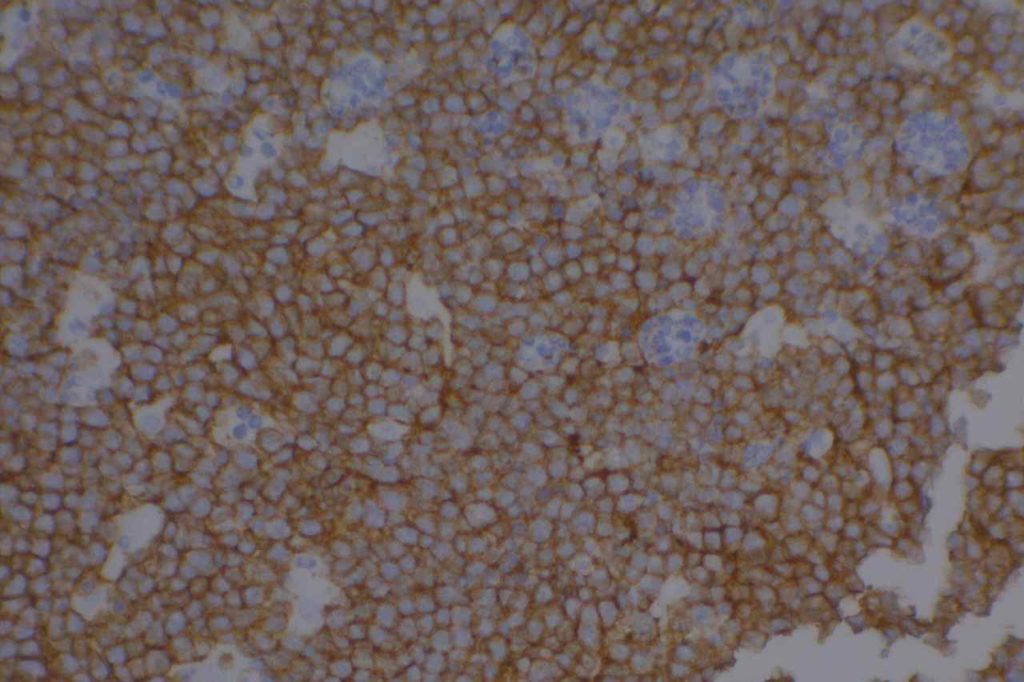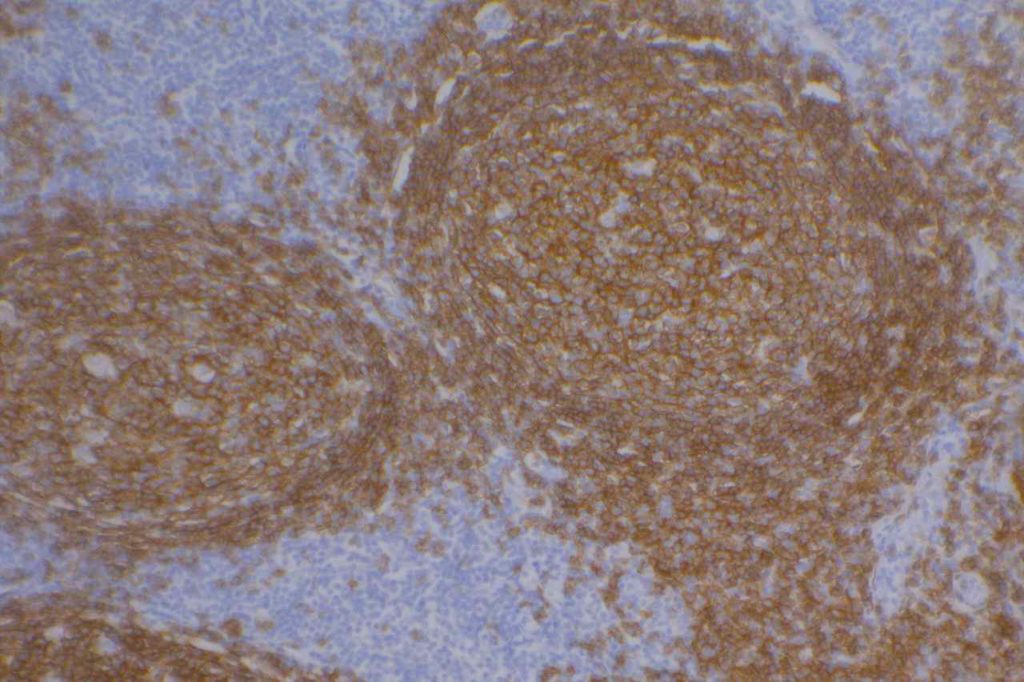CD19 is a B-cell marker. Until recently this antibody has only been available for use in flow cytometry. Now CD19 is available as an immunohistochemistry (IHC) marker, with similar sensitivity for B-cells to CD20. The IHC expression pattern is cytoplasmic and membranous. It is normally expressed on both Precursor B-cells and B-cells. CD19 combined with TdT would be specific to detect precursor B-cells. CD20 is not expressed on precursor B-cells, but mature B-cell with surface light chain expression (usually).
The utility of this marker may make it’s usefulness more limited in a non-hematopathology laboratory because there may be some cases of follicular lymphoma and DLBCL, which are negative for CD19. Therefore, CD20 seems to be more sensitive for mature B-cell neoplasms.
CD19 may be a good marker for Pre B ALL in tissue sections, and detecting B-cells, which have lost CD20 expression due to immunotherapy with rituximab. Although PAX-5 may better given its broader utility in most immunohistochemistry laboratories and CD19’s more limited sensitivity. Some studies show that not only may CD20, but also other B-cell markers, may be down regulated after rituximab therapy, which may necessitate a panel of B-cell markers (e.g. CD79a, PAX-5, CD19, OCT.2, BOB.1) to detect residual B-cell lymphoma cells.
Photomicrographs


References
Cannizzo E, Carulli G, Del Vecchio L, Ottaviano V, Bellio E, Zenari E, et al. The role of CD19 and CD27 in the diagnosis of multiple myeloma by flow cytometry: a new statistical model. Am J Clin Pathol. 2012;137: 377–386. doi:10.1309/AJCP63TOCFNAMDMS
Chu, P. G., Loera, S., Huang, Q., & Weiss, L. M. (2006). Lineage Determination of CD20- B-Cell Neoplasms: An Immunohistochemical Study. American Journal of Clinical Pathology, 126(4), 534–544. doi:10.1309/3WG32YRAMQ7RB9D4
Boyd SD, Natkunam Y, Allen JR, Warnke RA. Selective immunophenotyping for diagnosis of B-cell neoplasms: immunohistochemistry and flow cytometry strategies and results. Appl Immunohistochem Mol Morphol. 2013;21: 116–131. doi:10.1097/PAI.0b013e31825d550a
